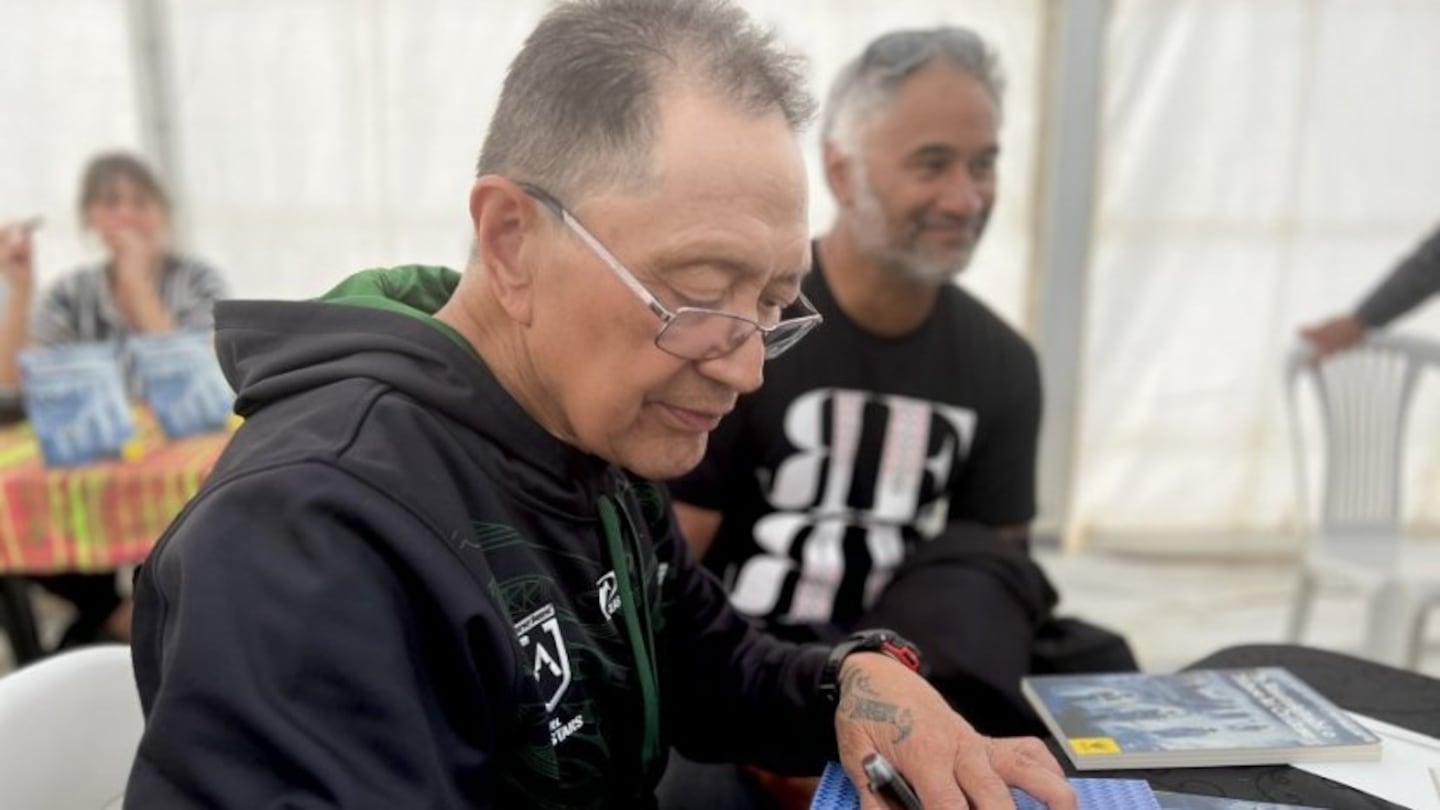Leading Māori academic Sir William Te Rangiua "Pou" Temara was raised by his kaumātua in Ruataahuna and as result has a focus on Te Reo Māori me ōna tikanga like no other.
He says the wisdom passed down to him by his kaumātua has formed the basis for his new book, Te Rautakitahi o Tūhoe ki Ōrākau, which was launched in an replica of Ōrākau Pa in Mamaku.
“Everyone in the world knows about what happened in Ōrākau, though the kōrero that people know now was not written by Māori, [and was written] in a non-Māori way with a non-Māori understanding, so this book today is written by Māori, by a descendant of those who went to Ōrākau, and was launched with descendants today.”
The book is focused purely on what happened through the eyes of Tūhoe. It gives a glimpse of what happened to its people and how the battle fell out between the 300 Māori in the fortified pa at Ōrākau and the 1400 British troops who laid siege in 1864.
“The battle continued for three days. The 1400 British troops had more resources, more people and more chances and yet, three days of war. When the Māori understood that they would not win, they fled to the swamps where they were shot - 50% of them died,” Temara says.
Re-make 'just as good'
Due to kaupapa on the original Ōrākau site, whenua of Ngāti Raukawa and Ngāti Maniapoto, the book launch was forced to relocate and to a surprise venue. Whānau had discussed with Tā Pou Temara that Mamaku was a perfect spot to have the launch, as a local film crew has re-created the scene of Ōrākau, 1864, as a future project.
“Today we were unable to go to the ‘real’ Ōrākau but this place, the re-make of the Ōrākau pā is just as good, as it looks like the old 1864 pā site and has the feel to it, as we sit here and acknowledge what happened to our ancestors.”
The book's cover was created by Tūhoe artist Wairere Tame Iti, who hails from Ruatoki and has a rich history in Māori arts as a Māori activist.
He says contributing to the book through art was a pleasure he has been excited about, as the kaupapa of the book is close to his ngākau.
“What Pou has done is good. I have read the book already and the structure, the essence of it, is good. The way he articulately structured it word by word is a piece of art and what is even better is that this book is written by a descendant of those who went to Ōrākau, written by Tūhoe.”
Iti rates new book
Iti says he is excited to see this book become available for schools, for hapu and for everyone to read and understand what actually happened to Tūhoe in the battle in Ōrākau.
“This book will be good in our kura, in our hapū, for everyone. Let’s not let anyone but ourselves write the stories of our ancestors, land, leave it for the descendants to carry on the kōrero, the ones who learned, understood and know the kōrero from our kaumātua.”
Temara says his time with his kaumātua was a privilege. They were speakers, and spoke about everything and anything, mostly about what happened in Ōrākau.
“I was taught and learnt everything I remember from my kaumātua. What i was told was the kōrero through the eyes of my koroua, who brought up my kuia, who had my mother and that is where my kōrero come from.”
“Ko Ōrākau tēnei, ahakoa he mea hanga o ngā tāngata o nāianei, ko ngā whakaaro kē, kai koneki - This is Ōrākau, although it was made by the people here today, this is where the idea is, this is what it was like, right here in the embodiment of Ōrākau.”

